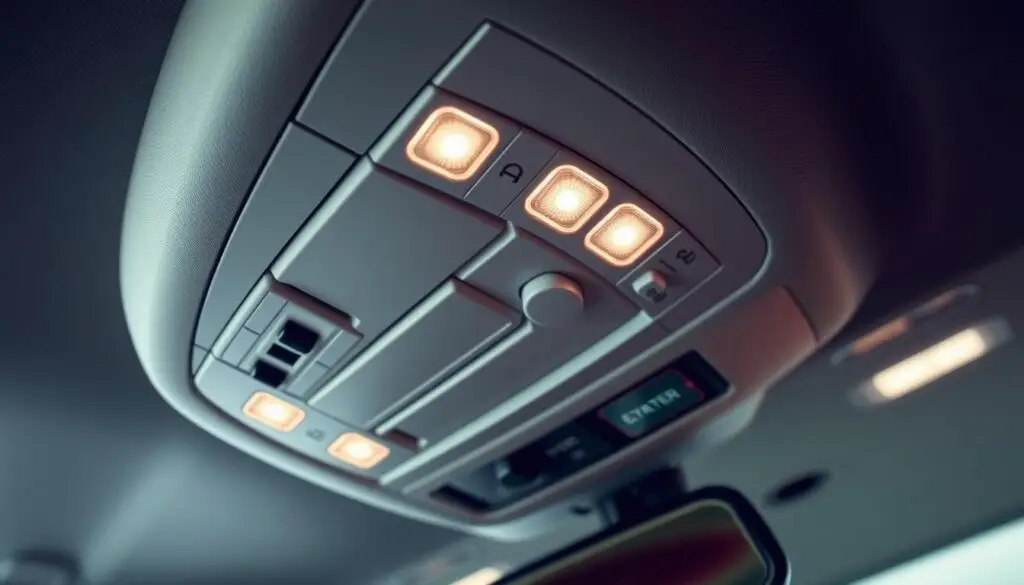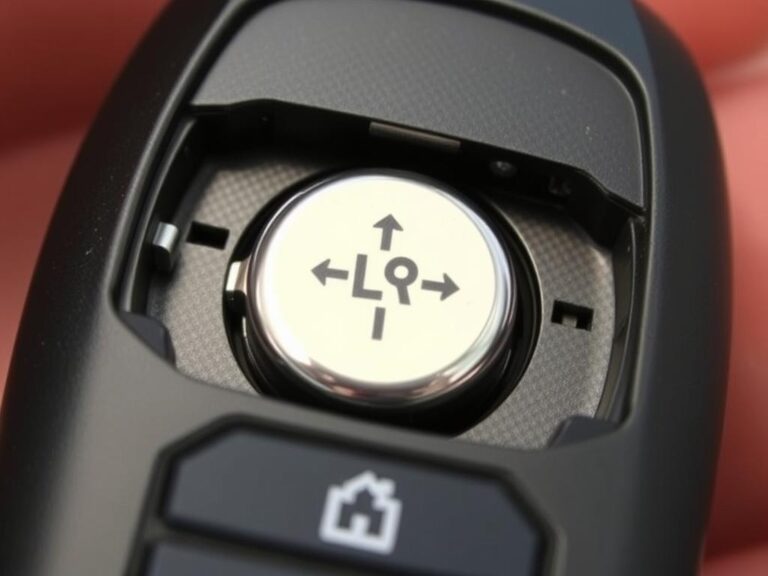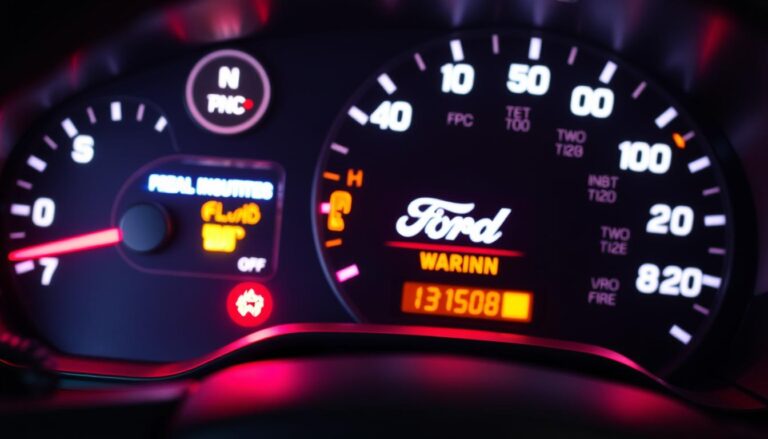Managing the interior lights in your Ford Explorer is crucial for maintaining battery life and ensuring a comfortable driving experience.
The Ford Explorer is equipped with advanced interior lighting systems that provide convenience and safety. However, if not managed properly, these lights can quickly drain the battery.
Being aware of interior lighting controls can help you optimize your vehicle’s performance and reduce the risk of battery drain.
Key Takeaways
- Proper management of interior lights can extend battery life.
- The Ford Explorer’s advanced lighting system offers both convenience and safety features.
- Understanding how to control interior lighting is essential for optimal vehicle performance.
- Interior lights can be a significant drain on the battery if left on.
- Knowing your Ford Explorer’s lighting controls can enhance your driving experience.
Understanding the Ford Explorer Interior Lighting System
The interior lighting system in Ford Explorer models is designed to provide a comfortable and safe driving environment. This system encompasses various types of lights that illuminate the cabin, enhancing visibility and ambiance.
Types of Interior Lights in Ford Explorer Models
Ford Explorer models feature a range of interior lights, including dome lights, courtesy lights, and ambient lighting. Dome lights provide overall illumination, while courtesy lights are designed to light up specific areas, such as the footwells or door areas. Ambient lighting adds a modern touch, creating a welcoming atmosphere within the vehicle.

How the Automatic Interior Lighting System Works
The automatic interior lighting system in Ford Explorers is designed to turn on and off based on the vehicle’s status. When a door is opened, the interior lights turn on, providing illumination. As the doors are closed, the lights gradually dim or turn off, depending on the settings. This feature is controlled by a combination of door ajar sensors and the vehicle’s computer system.
Why Interior Lights Matter for Battery Life
Interior lights, if left on, can significantly drain the vehicle’s battery. It’s essential to understand how to control these lights to prevent unnecessary battery drain. Leaving interior lights on can lead to a dead battery, especially when the vehicle is parked for extended periods.
By understanding the Ford Explorer’s interior lighting system, owners can better manage their vehicle’s electrical system and prevent potential issues.
How to Turn Off Interior Lights Ford Explorer: Step-by-Step Guide
To avoid draining your Ford Explorer’s battery, it’s essential to understand how to turn off the interior lights properly. The interior lighting system in your Ford Explorer is designed for convenience and safety, but managing it is crucial for battery life.
Using the Overhead Console Controls
The overhead console is the central hub for controlling the interior lights. To turn off the interior lights using the overhead console controls, start by locating the dome light switch. This switch typically has three positions: “On,” “Off,” and “Door.” To turn off the interior lights, simply switch the dome light switch to the “Off” position. This will ensure that the lights remain off regardless of whether the doors are open or closed.

Door Switch Method for Quick Deactivation
Another method to turn off the interior lights is by using the door switch. When the dome light switch is in the “Door” position, the interior lights will turn on when a door is opened. To deactivate this feature, you can either close all doors or switch the dome light switch to the “Off” position. This method provides a quick way to manage the interior lighting based on your needs.
Adjusting the Dimmer Switch Settings
Some Ford Explorer models come equipped with a dimmer switch that controls the brightness of the interior lights. Adjusting the dimmer switch can help you customize the lighting to your preference. To adjust the dimmer switch, locate it near the overhead console or on the dashboard. Rotate the switch to increase or decrease the brightness of the interior lights. While this doesn’t directly turn off the lights, it helps in managing their intensity.
Verifying the “Door” vs “Off” Position
Understanding the difference between the “Door” and “Off” positions of the dome light switch is crucial. When the switch is in the “Door” position, the interior lights will operate based on door ajar sensors. In contrast, switching it to “Off” will disable the interior lights entirely, even if a door is open. Verifying the position of this switch is key to managing your Ford Explorer’s interior lighting effectively.
By following these steps, you can efficiently manage and turn off the interior lights in your Ford Explorer, helping to preserve battery life and enhance your overall driving experience.
Model-Specific Instructions for Different Ford Explorer Years
Understanding how to control the interior lights in your Ford Explorer is crucial, as the method differs across various model years. The Ford Explorer has undergone several design changes since its introduction, and the interior lighting system has evolved accordingly.
2020-2023 Ford Explorer Interior Light Controls
For the 2020-2023 Ford Explorer models, the interior light controls are primarily managed through the overhead console. To turn off the interior lights, locate the light control on the overhead console and switch it to the “Off” position. Additionally, these models feature an ambient lighting system that can be adjusted through the vehicle’s SYNC system.
2011-2019 Ford Explorer Lighting System
In the 2011-2019 Ford Explorer models, the interior lighting system can be controlled using the door switches and the dimmer switch on the overhead console. To turn off the interior lights, ensure that all doors are closed and adjust the dimmer switch to its lowest setting.
2006-2010 Ford Explorer Light Switch Locations
For the 2006-2010 models, the light switch is typically located on the dashboard or on the overhead console. To turn off the interior lights, you’ll need to locate this switch and adjust it accordingly. Some models may also have door-ajar sensors that affect the interior lighting.
2000-2005 and Older Ford Explorer Models
In older Ford Explorer models (2000-2005), the interior light controls are often more straightforward, with a simple switch that can be turned off manually. For these models, check the dashboard or overhead console for the light control switch.
Regardless of your Ford Explorer’s model year, it’s essential to consult your owner’s manual for specific instructions on controlling the interior lights. By understanding your vehicle’s unique features, you can efficiently manage the interior lighting system and prevent unnecessary battery drain.
Troubleshooting Persistent Interior Light Issues
Persistent interior light issues in your Ford Explorer not only drain the battery but also cause annoyance; let’s explore how to troubleshoot them.
When interior lights remain on longer than expected, it can be due to several factors. Understanding these causes is crucial for effective troubleshooting.
Diagnosing Door Ajar Sensor Problems
The door ajar sensor plays a significant role in controlling the interior lights. A faulty sensor can trick the system into thinking a door is ajar, keeping the lights on. To diagnose this issue, inspect the sensor for any debris or damage. Cleaning or replacing the sensor might resolve the problem.
Steps to diagnose:
- Check the sensor for debris or damage
- Test the sensor’s electrical connection
- Replace the sensor if necessary
Fixing Stuck Dome Light Switches
A stuck dome light switch can also cause the interior lights to stay on. To fix this, gently manipulate the switch to free it up. If the switch is damaged, consider replacing it.
Tips for fixing:
- Gently manipulate the switch
- Clean around the switch to remove dirt
- Replace the switch if it’s beyond repair
Checking and Replacing Interior Light Fuses
Blown fuses can sometimes cause lighting issues. Check your Ford Explorer’s fuse box for any blown fuses related to the interior lighting. Replacing a blown fuse can often resolve the issue.
Fuse replacement steps:
- Locate the fuse box
- Identify the relevant fuse
- Replace the fuse if it’s blown
Addressing Electrical System Malfunctions
In some cases, electrical system malfunctions can cause interior light issues. This might involve complex problems like wiring faults or module failures. If you suspect an electrical issue, it’s advisable to consult a professional mechanic.
By following these troubleshooting steps, you can identify and potentially fix the issue causing your Ford Explorer’s interior lights to stay on.
Advanced Features and Customization Options
Advanced interior lighting features in the Ford Explorer allow for a tailored driving experience, combining functionality with personal preference. The vehicle’s lighting system is not just about illumination; it’s about creating an ambiance that enhances the overall driving experience.
Using SYNC System for Lighting Control
The Ford Explorer’s SYNC system provides an intuitive way to control various aspects of the vehicle’s interior lighting. Through the SYNC interface, drivers can adjust lighting settings to their preference, ensuring a comfortable and personalized environment. Lighting control is just one of the many features accessible through this advanced system.
Programming Personal Lighting Preferences
Ford Explorer owners can program their personal lighting preferences to suit different driving conditions or moods. This feature allows for a customized interior ambiance, enhancing the driving experience. Whether it’s adjusting the brightness or selecting different lighting themes, the Ford Explorer offers flexibility in personal lighting preferences.
Battery-Saving Automatic Timeout Features
To conserve battery life, the Ford Explorer is equipped with automatic timeout features for its interior lights. These features ensure that lights are not left on unnecessarily, helping to prevent battery drain. This is particularly useful for drivers who may forget to turn off their interior lights.
Aftermarket Interior Lighting Solutions
For those looking to further customize their Ford Explorer’s interior lighting, aftermarket interior lighting solutions are available. These can range from ambient LED lighting kits to custom light installations, offering a wide range of possibilities for personalization.
By leveraging these advanced features and customization options, Ford Explorer owners can enjoy a more personalized and efficient driving experience. Whether through the SYNC system, personal lighting preferences, or aftermarket solutions, the possibilities for customization are vast.
Conclusion
Effectively turning off interior lights in your Ford Explorer is crucial for maintaining battery life and overall vehicle performance. This guide has walked you through understanding the Ford Explorer’s interior lighting system, step-by-step instructions for different models, and troubleshooting common issues.
By following the outlined methods, including using the overhead console controls, door switch method, and adjusting dimmer switch settings, you can efficiently manage your vehicle’s interior lighting. Understanding the specific controls and features of your Ford Explorer model, whether it’s a 2020-2023, 2011-2019, or an older model, is key to optimizing interior light usage.
For owners looking to enhance their vehicle’s features, exploring advanced SYNC system capabilities and aftermarket interior lighting solutions can further personalize your driving experience. Proper management of Ford Explorer interior lights not only improves battery longevity but also contributes to a more comfortable and customized driving environment.
By applying the knowledge from this guide, you can ensure your Ford Explorer’s interior lighting system is used effectively, enhancing your overall driving experience.
FAQ
How do I turn off the interior lights in my Ford Explorer?
You can turn off the interior lights in your Ford Explorer by using the overhead console controls, the door switch method, or adjusting the dimmer switch settings.
Why are my Ford Explorer’s interior lights staying on?
If your Ford Explorer’s interior lights are staying on, it could be due to a faulty door ajar sensor, a stuck dome light switch, or an electrical system malfunction.
Can I customize the interior lighting in my Ford Explorer?
Yes, you can customize the interior lighting in your Ford Explorer using the SYNC system, programming personal lighting preferences, or installing aftermarket interior lighting solutions.
How do I adjust the dimmer switch settings in my Ford Explorer?
To adjust the dimmer switch settings in your Ford Explorer, locate the dimmer switch on the overhead console and rotate it to your desired brightness level.
What is the purpose of the automatic interior lighting system in my Ford Explorer?
The automatic interior lighting system in your Ford Explorer is designed to provide convenience and comfort by automatically turning on and off the interior lights based on the vehicle’s status.
Can a faulty interior light fuse cause my Ford Explorer’s interior lights to malfunction?
Yes, a faulty interior light fuse can cause your Ford Explorer’s interior lights to malfunction, and checking and replacing the fuse may resolve the issue.
Are there any battery-saving features available for the interior lighting system in my Ford Explorer?
Yes, your Ford Explorer is equipped with battery-saving automatic timeout features that can help conserve battery life by turning off the interior lights after a period of inactivity.


